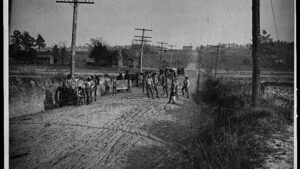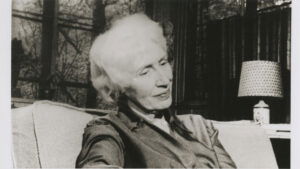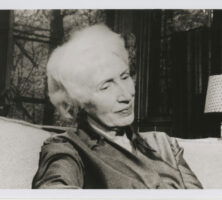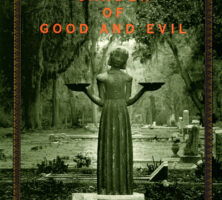The New Georgia Encyclopedia is supported by funding from A More Perfect Union, a special initiative of the National Endowment for the Humanities.
The author Lillian Smith, a longtime resident of Clayton, is best known for her novel Strange Fruit, published in 1944, and her nonfiction treatise Killers of the Dream, first published in 1949 and reissued in 1961. Both works are strong denunciations of racism and segregation in the South.
The New Georgia Encyclopedia does not hold the copyright for this media resource and can neither grant nor deny permission to republish or reproduce the image online or in print. Requests for permission to publish or reproduce the resource should be submitted to the Hargrett Manuscript and Rare Book Library at the University of Georgia.
The New Georgia Encyclopedia does not hold the copyright for this media resource and can neither grant nor deny permission to republish or reproduce the image online or in print. All requests for permission to publish or reproduce the resource must be submitted to the rights holder.
Convicts are shown circa 1909 working on one of the first graded roads in Rockdale County. The convict lease system was abolished in 1908, as one of many reforms enacted during the Progressive era, but soon chain gangs took the place of convict leasing.
Courtesy of Georgia Archives, Vanishing Georgia, #
roc063.
The New Georgia Encyclopedia does not hold the copyright for this media resource and can neither grant nor deny permission to republish or reproduce the image online or in print. Requests for permission to publish or reproduce the resource should be submitted to the Georgia Archives.
The New Georgia Encyclopedia does not hold the copyright for this media resource and can neither grant nor deny permission to republish or reproduce the image online or in print. All requests for permission to publish or reproduce the resource must be submitted to the rights holder.
New York native Berendt lived off and on in Savannah for eight years, interviewing locals and gathering material for Midnight in the Garden of Good and Evil.
Photograph by Marion Ettlinger
The New Georgia Encyclopedia does not hold the copyright for this media resource and can neither grant nor deny permission to republish or reproduce the image online or in print. All requests for permission to publish or reproduce the resource must be submitted to the rights holder.
Critics generally were unimpressed with the film adaptation of John Berendt's book or with The Lady Chablis, who played herself in the movie.
Courtesy of The Lady Chablis
The New Georgia Encyclopedia does not hold the copyright for this media resource and can neither grant nor deny permission to republish or reproduce the image online or in print. All requests for permission to publish or reproduce the resource must be submitted to the rights holder.
Published by Random House in January 1994, Midnight in the Garden of Good and Evil quickly became known in Savannah as simply "The Book." Since that time the nonfiction narrative has sold more than three million copies in 101 printings, has been translated into twenty-three languages and appeared in twenty-four foreign editions, and has brought hundreds of thousands of tourists to Savannah.
The New Georgia Encyclopedia does not hold the copyright for this media resource and can neither grant nor deny permission to republish or reproduce the image online or in print. All requests for permission to publish or reproduce the resource must be submitted to the rights holder.







